Sustainable marketing is no longer ‘just a trend’ that companies can choose to follow.
As environmental problems increase and society becomes more socially responsible, consumers are looking for companies that reflect their values.
According to research, 77% of consumers claim that brands’ sustainability practices play a role in their purchasing decisions.
For us marketers that means traditional marketing is no longer a viable option.
To protect the future of our planet and the people living on it, 2021 must be the year in which brands make the move towards sustainable marketing.
So, let’s find out what it means to be sustainable and how you can take a stand on sustainability.
Table of Contents
What is sustainable marketing?
Sustainable marketing definition states that this form of marketing aims to promote a company’s sustainable and environmentally friendly products or services.
A product is considered “sustainable” if it meets the needs of this generation’s social behavior and at the same time doesn’t disturb the needs of the generations to come.
The main goal of sustainable marketing is to produce products and services that will join the global movement of protecting the environment and, in this way, encourage their consumers to do the same.
As the company starts standing out due to its sustainability efforts, its brand recognition and customer acquisition will simultaneously increase.
Sustainable marketing concept includes three pillars:
- Environmental
- Economic
- Social
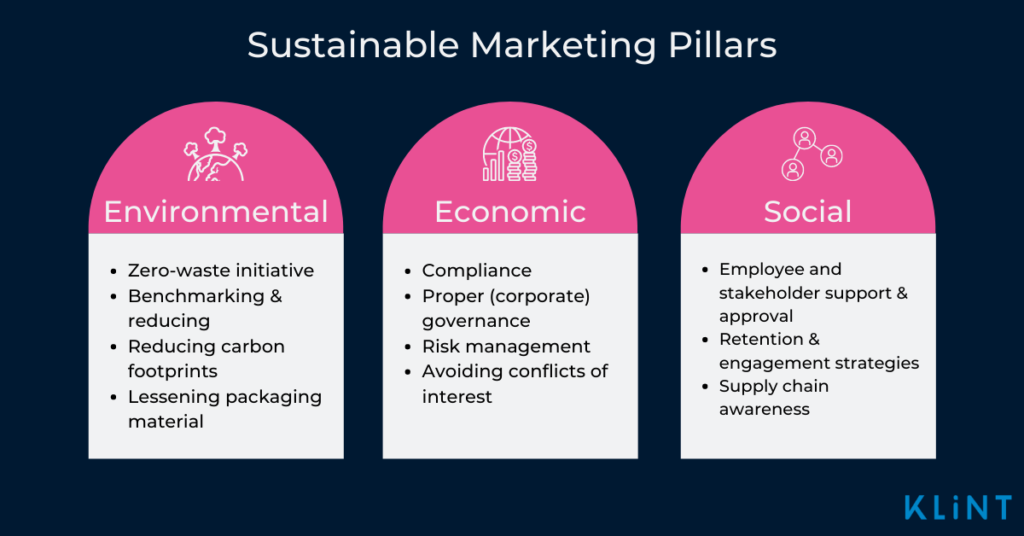
Moreover, according to sustainability marketing definition, sustainable marketing also shouldn’t be confused with green marketing or environmental marketing.
Green marketing
Green or environmental marketing includes all the promotional strategies of a product that has been produced in an environmentally safe manner.
Companies’ key focus when branding and promoting their new products in green marketing is to highlight their eco-friendliness.
Compared to sustainable marketing, green marketing strategy is solely concerned with the production processes and their eco-friendly features.
Sustainable marketing, on the other hand, focuses on preventing today’s production habits from exhausting supplies for the future, while keeping the businesses profitable and running.

Sustainable marketing vs. Traditional marketing
Unlike traditional or mainstream marketing practices, sustainable marketing doesn’t prioritize profit over the planet or other social causes. Instead, it’s trying to achieve sustainable profit within the limits of our planet and society.
The main incentive of sustainable marketing is achieving customer success in an ecologically sustainable way. In traditional and other marketing strategies, however, sustainability is traded for more profit.
By definition, there are a few crucial differences between these two marketing strategies:

Image created in-house. Inspired by ResearchGate
That’s at least in theory.
In recent years, however, we’ve seen many companies claiming to be “sustainable” while actually being the complete opposite. And the reason behind such tactics is, of course, to make a profit. But more on that later on.
Why is sustainable marketing important?
Companies that fail to adopt sustainable marketing risk losing their consumers. One simple explanation of this phenomenon is that customers love to relate to their preferred brands.
Unless a brand makes an effort to understand customers’ wants and needs, the likelihood of keeping loyal customers is low.
Matching your brand values to the values of your consumers is a key to successful branding and long-term business prosperity.
Presently, people have been putting an effort to become more eco-friendly, more sustainable, and more protective of their environment. These, among others, are the values companies should strive toward. And ensure steady customer acquisition and satisfaction.
In fact, the research has shown that 47% of consumers walk away from brands that fail to take a stand on sustainability, with 17% never returning.
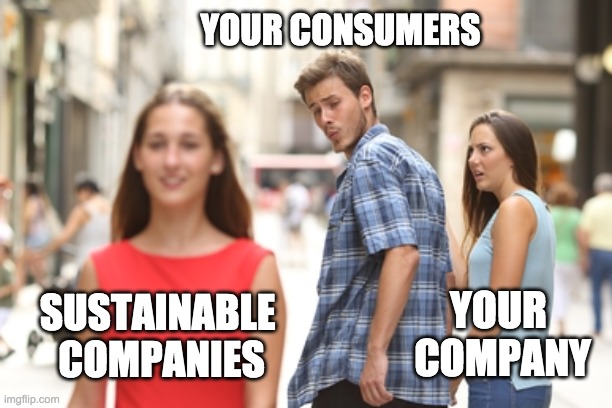
Should I switch to sustainable marketing?
In case you need more reasons why this marketing type should be companies’ top priority, here are five that will help you understand the importance of sustainable marketing concept:
- Eight in 10 consumers care about sustainability
- Sustainable marketing leads to larger profits, more cost savings, and improved customer loyalty
- 54% of Generation Z that will soon become the largest in the US value a brand that is using sustainable practices
- 70% of consumers are willing to pay a premium price for sustainable products
- CPG brands noted 50% market growth between 2013-2018 due to sustainability
Also, according to IBM, 2020 was a year in which sustainability reached an all-time high. The following chart illustrates what consumers are expecting from brands in recent years:
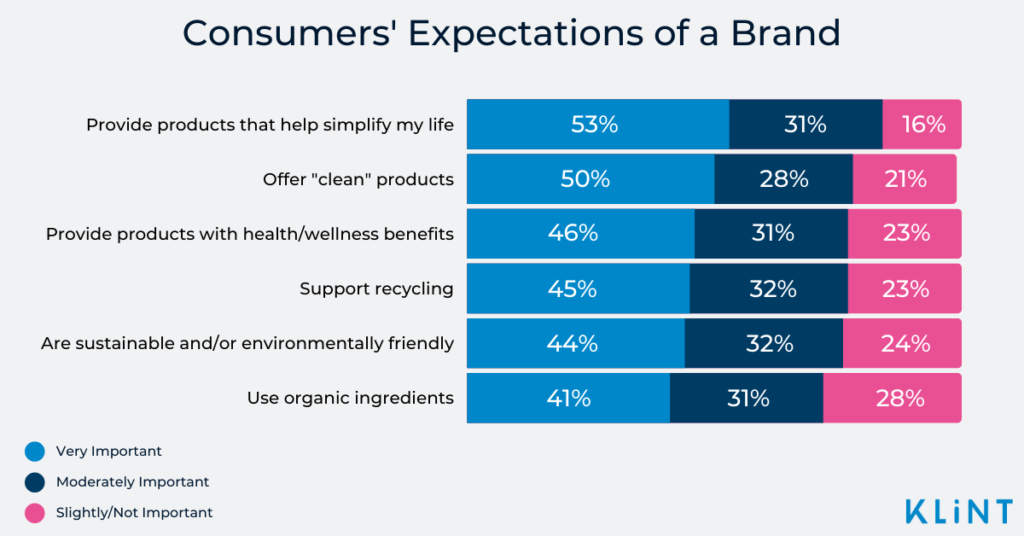
While sustainable marketing can be very lucrative, that shouldn’t be the reason why you decide to adopt it. If you make the move towards sustainability then it should be because you genuinely care about our planet, our society, and the sustainable growth of your company.
What are sustainable marketing benefits?
Adopting sustainable marketing will definitely help your company bear fruit. Some of the top benefits of opting for a sustainable marketing concept include:
- Enhanced brand recognition
- Reduced costs and improved effectiveness
- Easier compliance with regulations
- Better customer and partner acquisition
- Minimized waste
- Increased ROI
With that in mind, let’s find out how you can incorporate sustainable marketing principles in your day-to-day operations.
Five sustainable marketing principles
For sustainable marketing to run smoothly and ensure business success, companies should learn what the five guiding principles of sustainable marketing are. And use them as a benchmark for the next sustainable marketing campaign/strategy:
Consumer-oriented marketing
Your efforts should respond to the needs of your customers. This means that your brand and products should reflect your consumers’ interests, expectations, and values.
Your products’ end goal should be to satisfy, be useful, and provide a solution to your existing and potential customers.
Targeting your audience and conducting research on their pain points and expectations is a go-to strategy for establishing customer-oriented marketing.
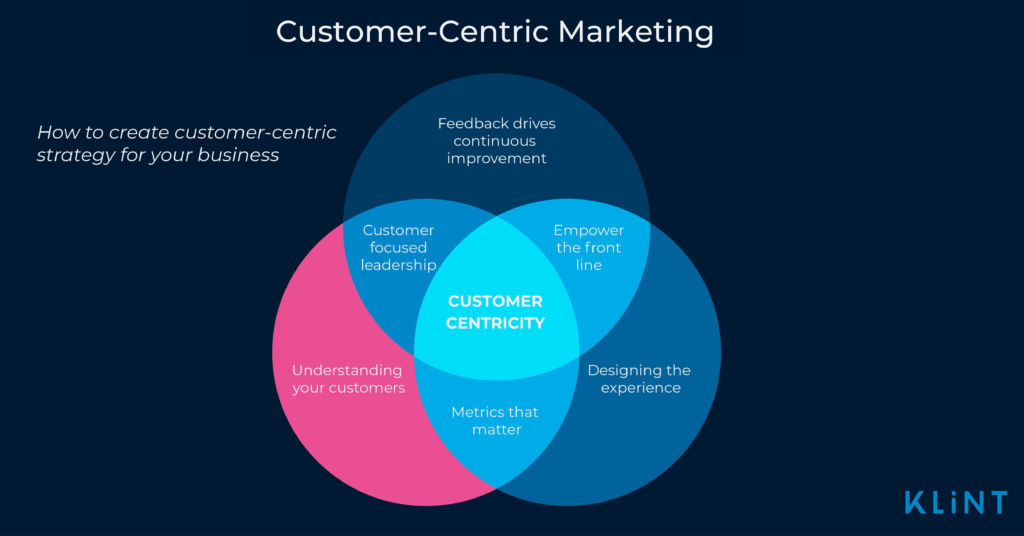
Customer-value marketing
To profit off your sustainable solutions, you have to create value for your customers. Product value is resembled in product quality, features and solutions, and convenience for the users.
Creating value helps brands build customer loyalty. However, brands should also be careful to listen to their customers. And remember to provide and improve product values continuously for long-term success.
Is your (sustainable) solution providing new value?
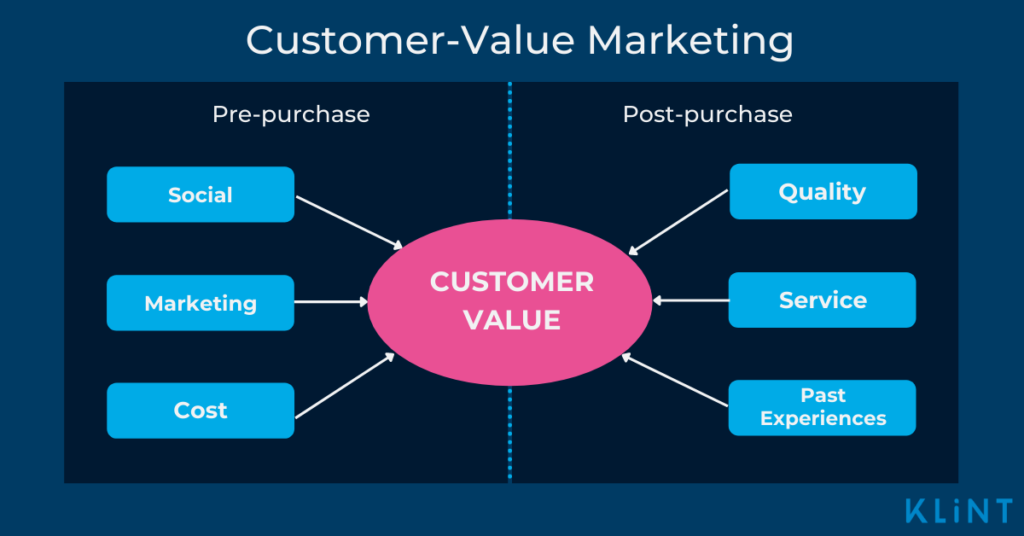
Innovative marketing
Being innovative in marketing is a must-have skill in today’s ever-changing world. People easily get tired of the same routine thing and they crave changes. Customers crave innovation even more.
Therefore, every company’s goal should be to innovate, fail, improve, and repeat. (The failing part would be an unfortunate turn of events though, which we genuinely hope you will not experience)
Always search for new inspiration and ideas. Furthermore, remember to aim at creating a marketing campaign that hasn’t been seen before. Perhaps a sustainable marketing campaign sounds like a good choice?
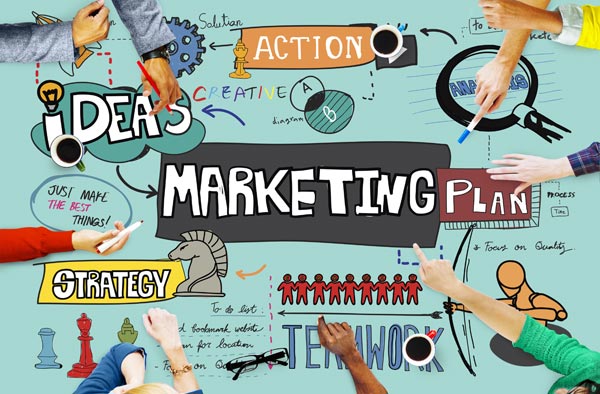
Mission marketing
Mission marketing aims at adapting mission to fit broad social terms instead of narrow product terms. Every company should try to find a suitable social mission that will give better direction to its employees.
So, instead of proposing specifically defined product terms, try to look at the bigger picture. And make a marketing campaign with a mission.
Many famous brands such as Ben&Jerry’s, Dove, and others, have tried out this marketing strategy, created a mission statement, and achieved great results – use their examples as inspiration for your next campaign!
Does your mission sound something like ‘Produce the most comfortable sneakers.’? Try to add a social component to it!
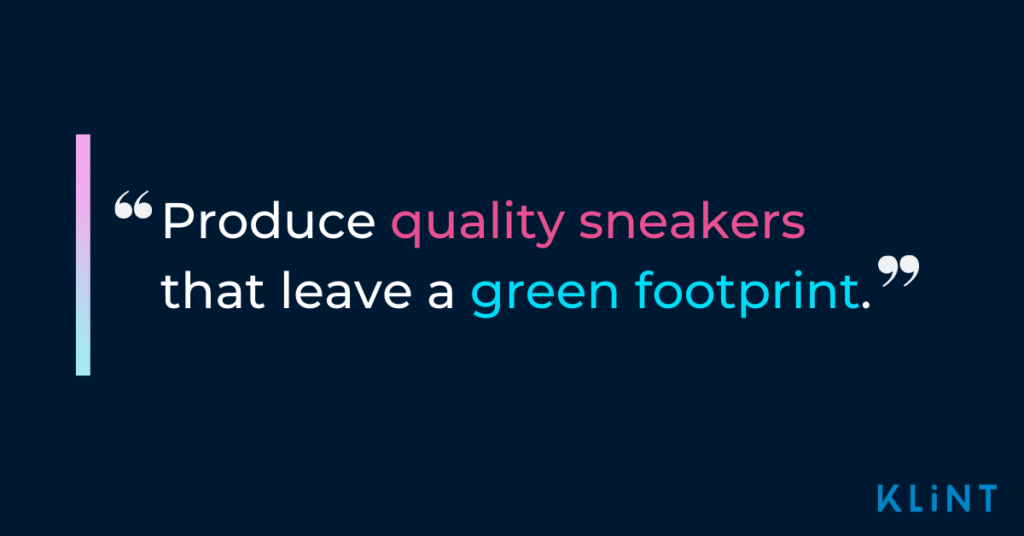
Societal marketing
Sustainable marketing adds a third component to the company-customer mix: social interests. As each company should strive toward having their customers’ best interests. However, companies’ missions should go even beyond that.
In sustainable marketing, every business should take into consideration society’s interest in the long run too. Marketers should ask themselves how their marketing practices benefit their organization. And more importantly ask how they benefit the community.
The bottom line is: how your customers perceive your sustainable marketing matters.
So, be sure to learn what customer perception is and what are some ways to improve it, which will make influencing your customer’s perception much easier.
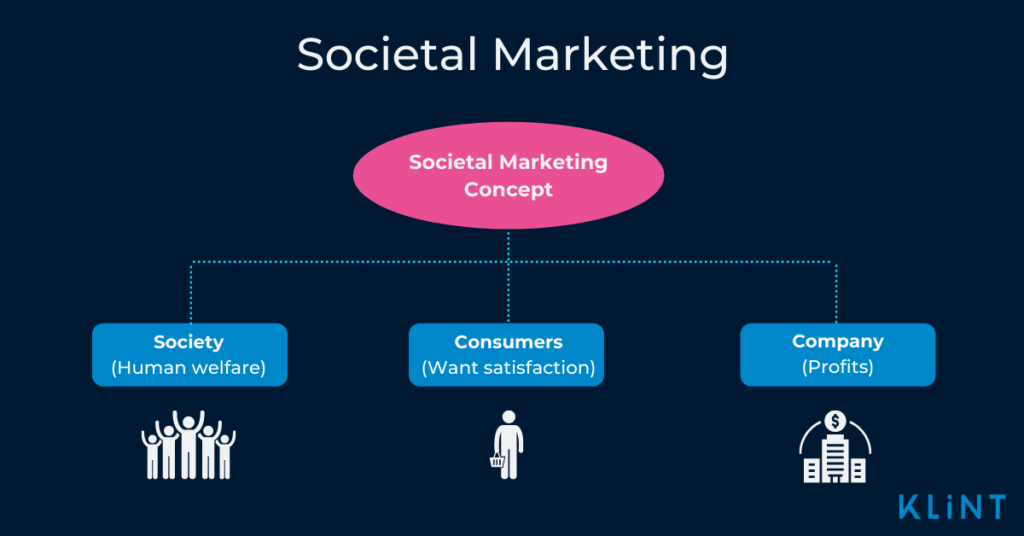
Sustainable marketing strategy vs. Sustainable marketing campaign
As we know by now sustainable marketing can be very lucrative.
Not to mention that according to research, sustainable investment assets grew from $12.0 trillion in 2018 to $17.1 trillion in 2020. That’s a 42% increase!
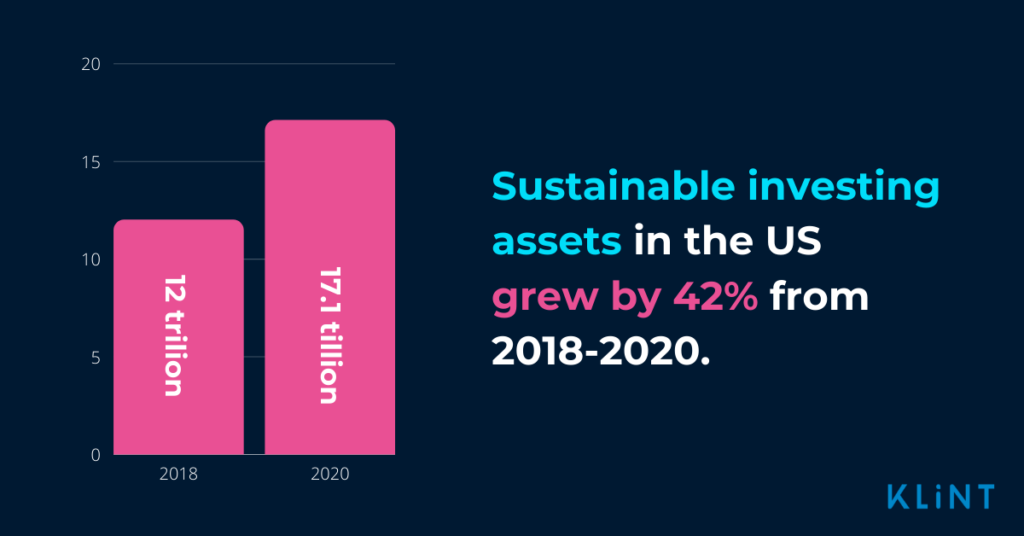
As a result, many companies that previously never seemed to show an interest in sustainability, are now putting out single marketing campaigns to deceive consumers into thinking they are sustainable.
Because of this, we need to clearly distinguish between sustainable marketing strategies and sustainable marketing campaigns.
To make things easier, it helps to first look at the difference between a marketing strategy and a marketing campaign:
- Marketing strategy: A brand’s grand plan that is linked to its overall goals.
- Marketing campaign(s): All the little steps a brand is taking within its grand plan.
Since that’s a very abstract way to explain it, let’s briefly look into Red Bull’s marketing strategy and campaigns to really understand the difference.
Red Bull’s sustainable marketing strategy
Marketing strategy RedBull created focuses on creating a culture of adrenaline and excitement rather than promoting the energy drink.

Some of Red Bull’s marketing campaigns that support the strategy:
- ‘The Red Bull Stratos Jump’: Felix Baumgartner’s jump from the edge of space broke multiple world records.
- ‘Who is JOB?’: A YouTube Series that offers a behind-the-scenes look into the life of athlete James O’Brien.
- Various sponsorships of athletes and sports teams
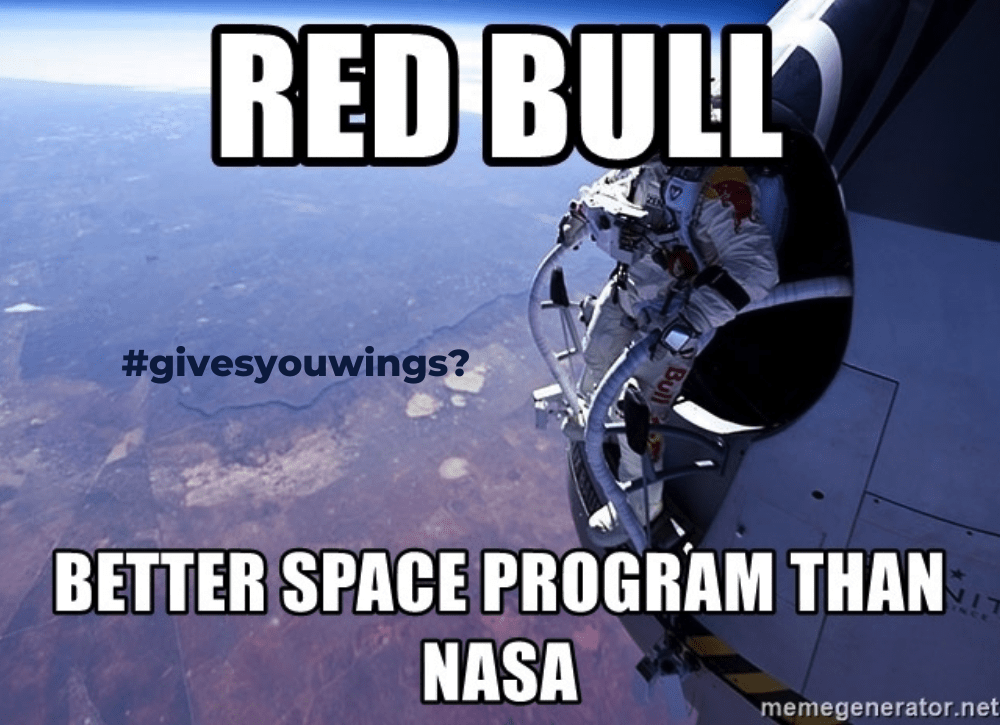
Add sustainable practices to the mix, and you know the difference between a sustainable marketing strategy and a sustainable marketing campaign.
So, what does it take to launch successful sustainable marketing strategies/campaigns?
Sustainable marketing examples
The companies that made this list, go the extra mile to fight social and environmental issues.
All you have to do to create your own (successful) sustainable marketing strategy/campaign is to follow our key takeaways from each example.
Orsted
The idea behind Orsted’s sustainable marketing strategy:
In 2020, Orsted was awarded the title of the world’s most sustainable company. And it’s all thanks to a 360° rebranding strategy that worked.
A couple of years back, Orsted recognized the massive potential of renewable energy.
So, they started to build off-shore wind farms and converted their coal and gas power stations to sustainable biomass.
As they became one of the fastest-growing energy companies, they made the bold decision to change their name from DONG (Danish Oil and Natural Gas) to Orsted.

Why does it work?
Rebranding (including name change) does carry certain risks. We’ve seen enough companies who tried to rebrand themselves and failed. So why did Orsted succeed?
It’s because they had a reason to take the step. Not only did the product they offer change, their values, vision and entire business strategy did, too.
What’s more is that their rebranding was backed by clear messaging that matched the tone of a progressing society. Orsted showed that following sustainable marketing principles and being brave and consistent can go a long way in securing future success.
Key takeaway
All your sustainability efforts should be clearly motivated. Your consumers need to know your ‘why‘.
Bagboard
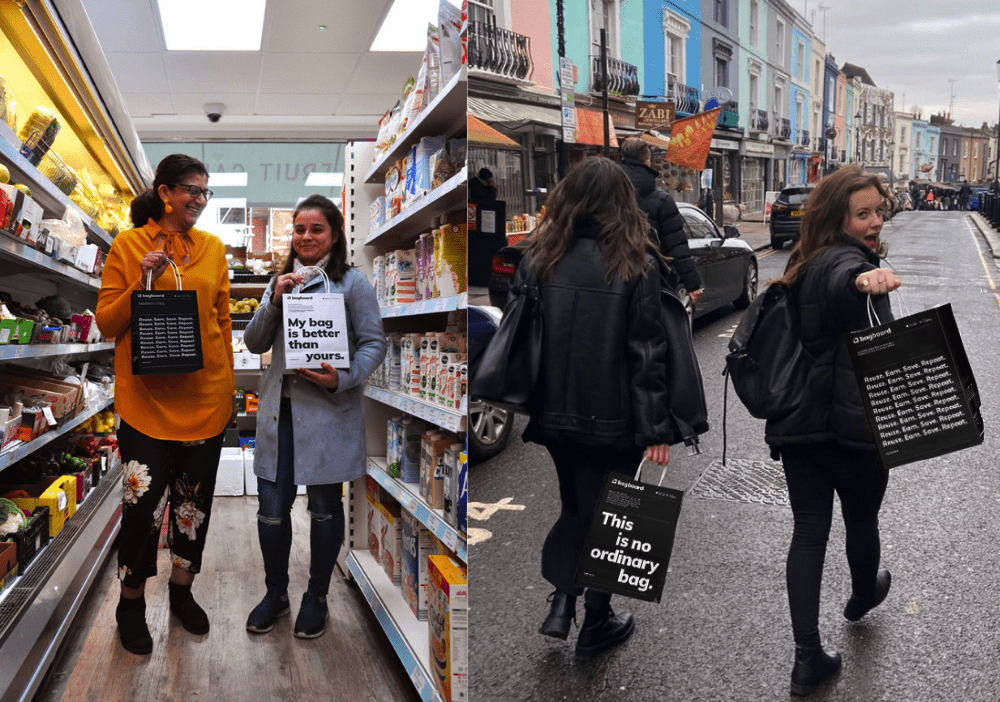
The idea behind Bagboard’s sustainable marketing strategy:
Bagboard is one of the sustainability pioneers we are most excited about. The UK-based platform sells eco-friendly, reusable, recyclable paper smart bags.
Bagboard is also working together with conscious brands to feature their campaigns on the bags. This branded content strategy greatly improves Bagboard brand recognition. Hence, while strolling the streets, you’re automatically promoting a brand of your own choosing.
There’s more: Bagboard has partnered with NGO Plastic Bank. The non-profit removes plastic from the ocean every time you reuse your bag.
Why does it work?
In the last couple of years, we’ve seen many companies introduce sustainable marketing concept into their marketing strategies. The sustainability practices go from the smaller steps, including switching to paper bags, to much bigger ones (starting global sustainable marketing campaigns).
But that’s not why Bagboard is so successful.
The concept behind Bagboard is super clever. It gives power to the consumer, data to brands, and revolutionizes the advertising concept.
Consumers are in charge of the brands they want to see grow, instead of being bombarded by their advertising. And brands can track how well their campaigns are doing. It’s a win-win.
Key takeaway
Tackle a sustainability issue from more than one angle to offer multiple solutions. Remember that the five guiding principles of sustainable marketing are consumer-oriented marketing, customer-value marketing, innovative marketing, mission marketing, and societal marketing.
Tony’s Chocolonely
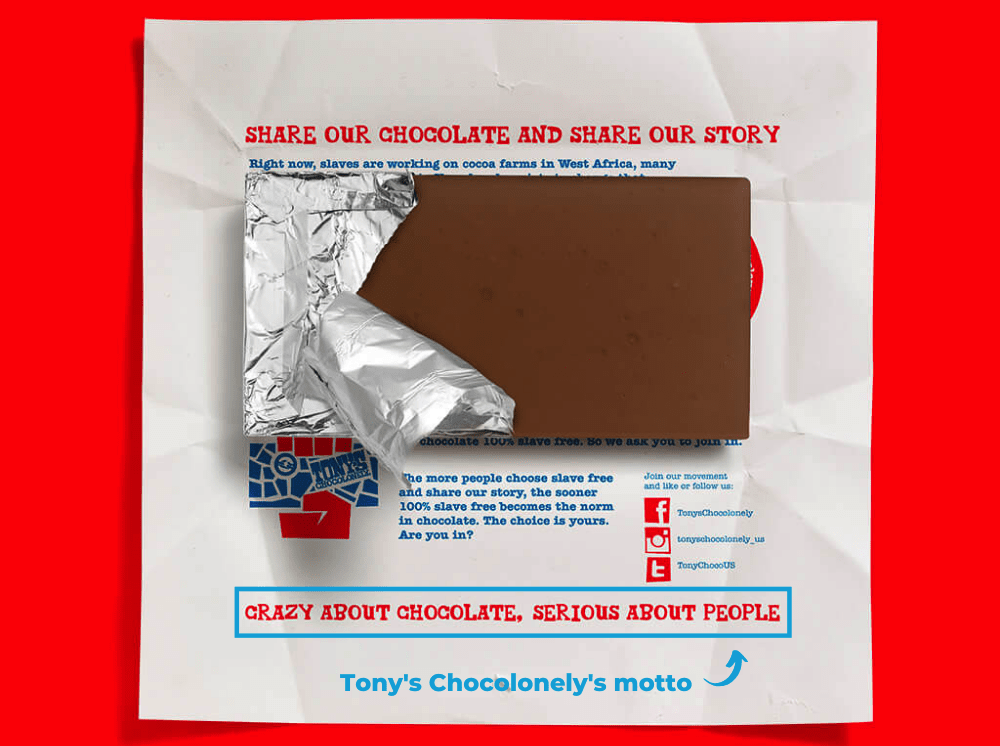
The idea behind Tony’s Chocolonely sustainable marketing strategy:
Chocolate that’s fighting a social cause? How could we not have included Tony’s Chocolonely in our list?
From the start, Tony’s Chocolonely has been on a clearly defined mission: To make chocolate 100% slave free and end child labour in the African cacao industry.
That mission earned it the title of the Netherlands ’ most sustainable brand. But Tony’s most remarkable feature is probably their blockchain-powered “Beantracker”. The technology monitors Tony’s Chocolonely’s entire value chain from bean to bar.
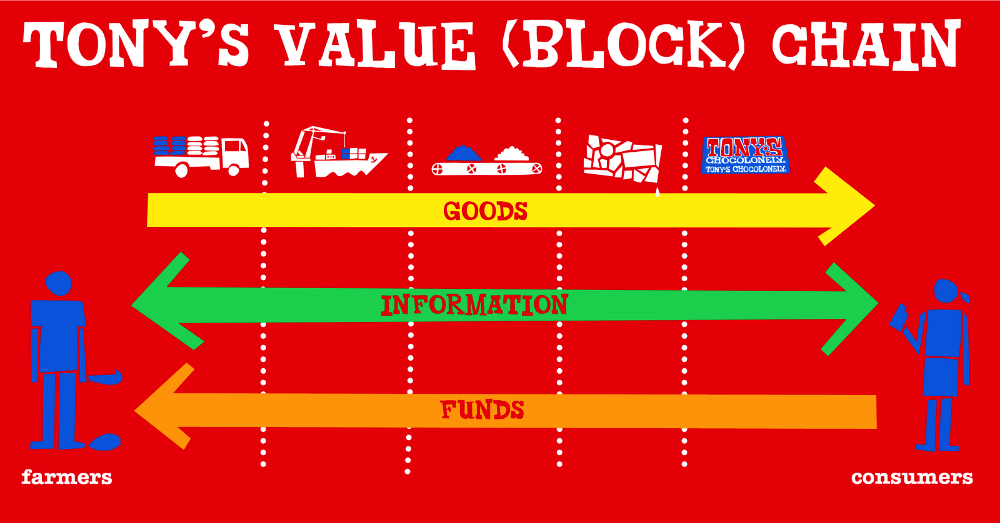
Why does it work?
As more and more companies are adopting sustainable marketing principles, consumers are becoming more skeptical. And honestly, who can blame them?
Why would consumers believe that Tony’s Chocolonely is making chocolate 100% slave free?
It’s because they don’t just rely on a fancy mission statement to confide trust in their consumers. Instead, the “beantracker” makes Tony Chocolonely’s value chain transparent and holds the company accountable.
Key takeaway
Be transparent to establish trust. For example, start with your production or hiring processes. Furthermore, always aim to define sustainable marketing strategy for your company that you will be able to follow through.
Patagonia

The idea behind Patagonia’s sustainable marketing strategy:
Patagonia is a household name in sustainable marketing. First and foremost, they’re a company that is producing outerwear.
But what they’re probably primarily known for is their activism. According to Patagonia’s website, they are “in business to save our home planet”.
In the past, they have asked customers to buy second-hand. And even put out a controversial campaign that told their consumers not to buy their jackets.
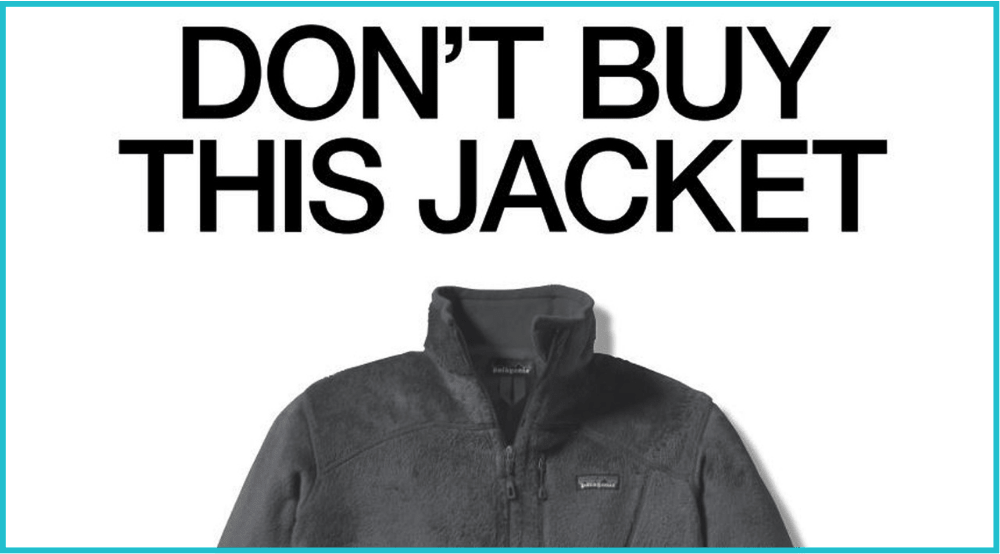
Why does it work?
Patagonia is serious about their commitment to saving our planet. Thus, their sustainable marketing doesn’t just sound good in theory; it’s backed by actions.
Here’s a selection of their sustainable marketing principles put into practice:
- Patagonia has imposed an Earth tax on themselves
- Their headquarters in Ventura is powered by solar energy
- They have funded 1,020 groups tackling climate change
Key takeaway
You know what they say: ‘Actions speak louder than words.’ That is why you should back-up your sustainable marketing with tangible actions.
Pangaia

The idea behind Pangaia’s sustainable marketing strategy/campaign:
Next in line, is one of the finest “high-tech naturalists”. If you’re looking for an ethical alternative to goose and duck-down jackets, then Pangaia should be at the top of your list.
And if you’re looking for a sustainable brand that understands and accelerates at technology, then the answer is also Pangaia.
Moreover, their latest great use of technology is an immersive VR experience that transports users to Antarctica. As, in the campaign, Pangaia celebrates the launch of their new jackets made out of flowers.
As the result, the entire experience is self-steered, which means that users can move through it as they like.

Why does it work?
Firstly, it’s fun to use. See for yourself.
Secondly, the experience lets users explore the design of the jackets and educates them about the jacket’s sustainable production processes.
But instead of just offering bare facts, users get to dive into a world that’s packed with exciting tech features. As a result, learning about sustainability becomes engaging and thus Pangaia becomes a fantastic sustainable marketing example!
Key takeaway
Thus, support your sustainable marketing with facts that are easy to digest.
KLM
The idea behind KLM’s sustainable marketing campaign:
You might be surprised that the Dutch flight carrier made it to the list. However, it’s KLM’s ‘Fly Responsibly’ campaign that affords it the spot.
In this marketing campaign, KLM asks passengers to think twice before flying KLM. And to instead consider going by rail or bus.
The idea behind the campaign is comparable to Patagonia’s ‘Do not buy this jacket’ campaign. Therefore, with the difference that KLM is also asking passengers to (at least sometimes) choose to travel with their indirect competitors.
Why does it work?
The campaign is reinforced by an open letter to the aviation community as well as a statement by the airline’s launch initiative:
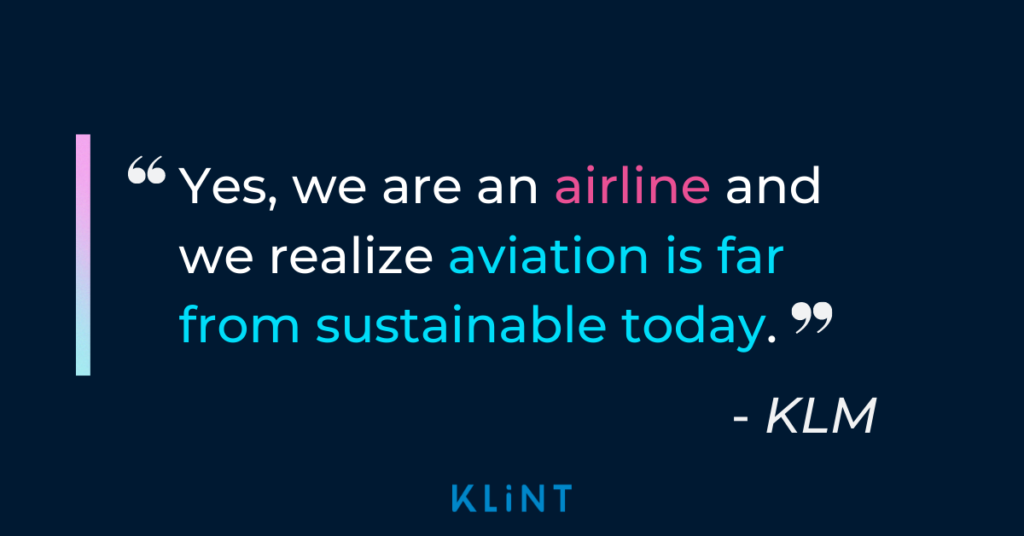
Therefore, instead of pretending that KLM is something they are not, they’re openly addressing that flying isn’t sustainable. And that sometimes the only solution might be not to fly.
This narrative makes KLM seem credible.
Key takeaway
Most importantly, be authentic in your sustainability efforts. If you’re not entirely sustainable don’t pretend that you are.
Pret a Manger
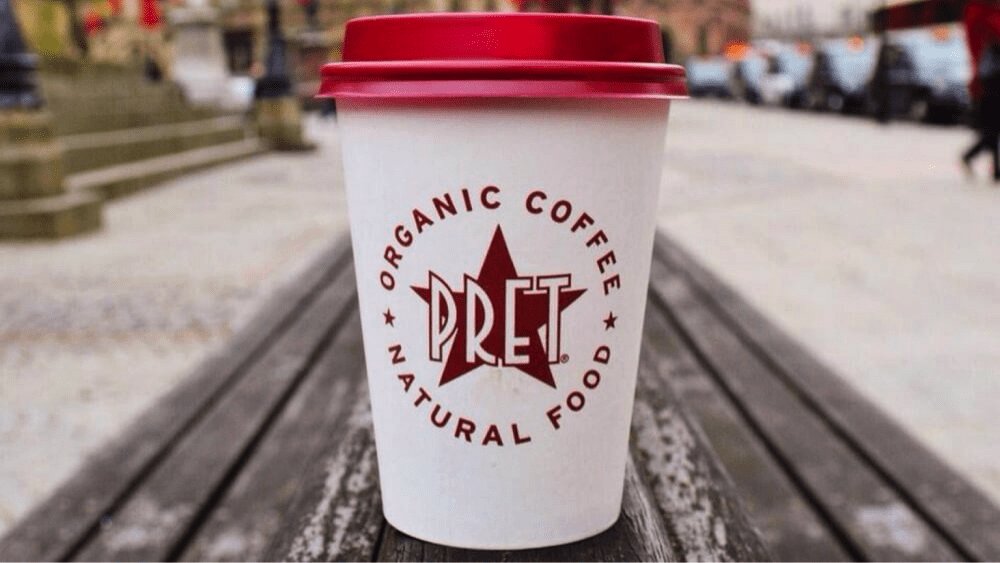
The idea behind Pret a Manger’s sustainable marketing campaign:
This next example of Pret a Manger is gentle on the wallets of all coffee-lovers. Since early 2020, Pret a Manger has been offering plant-based milk at no extra charge.
For example, coffee-giant Starbucks is still asking for $0.70 extra for coconut milk. And Dunkin Donuts $0.54 for almond milk.
Why does it work?
Consumers used to appreciate just getting a coffee with plant-based milk.
But as people are getting more conscious of their consumption habits, they will also no longer accept the extra charge for plant-based milk.
That is why, Pret a Manger has caught up on that development faster than its competitors. And that’s the simple reason why it works.
Key takeaway
You don’t have to release world-changing breakthroughs right of the bet. Just spot sustainable marketing developments your competitors have missed and start there.
Jigsaw
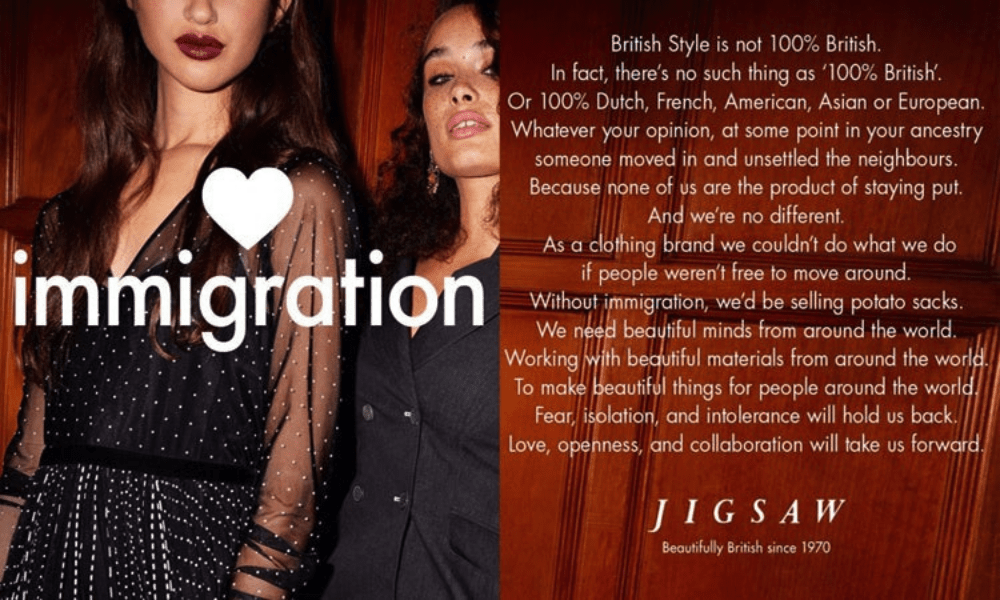
The idea behind Jigsaw’s sustainable marketing campaign:
Amidst Brexit discussions, the fashion retailer launched a campaign that awarded it the title of ‘Best marketing campaign of 2017’.
In fact, Jigsaw’s pro-immigration campaign with the tagline ‘There’s no such thing as 100% British’ turned out to be a huge success for the brand.
The goal was to highlight the benefits of immigration for the fashion industry. But in the bigger scheme of things, it certainly was a daring move for an immigration-sensitive, post-Brexit Britain.
Why does it work?
Jigsaw’s campaign is an excellent example of a risky sustainable marketing campaign that worked. However, the same can’t be said for all brands.
Remember Pepsi’s Kendall Jenner TV spot? Or Dove’s racist Facebook ad?
But Jigsaw’s campaign is different. As they decided to address a topic that, according to the campaign, is the reason they sell fashion and not potato sacks.
That is why, it positions them as having the right to talk about immigration.
Key takeaway
Thus, your sustainable marketing campaign shouldn’t just support any cause. For instance, find one that is rooted in your brand idea.
Growing Roots
The idea behind Growing Root’s sustainable marketing campaign:
Growing Roots is owned by Unilever and supports urban farming. Plus, their launch sustainable marketing campaign is a great example that proves that simple campaigns can also be effective.
In the video Growing Root’s founder tells the story of how the company was born and reveals the secret to its success.
According to Green Biz’ research, it is one of the most successful sustainable marketing strategies in 2020.
Why does it work?
The campaign makes use of the power of storytelling. As it’s easy to listen to as it doesn’t sidetrack you with statistics or complex facts.
Storytelling is definitely nothing revolutionary, but it’s effective, also for sustainable marketing.
Key takeaway
Here’s the good news: Storytelling and great content is still a winner!
Bacardi
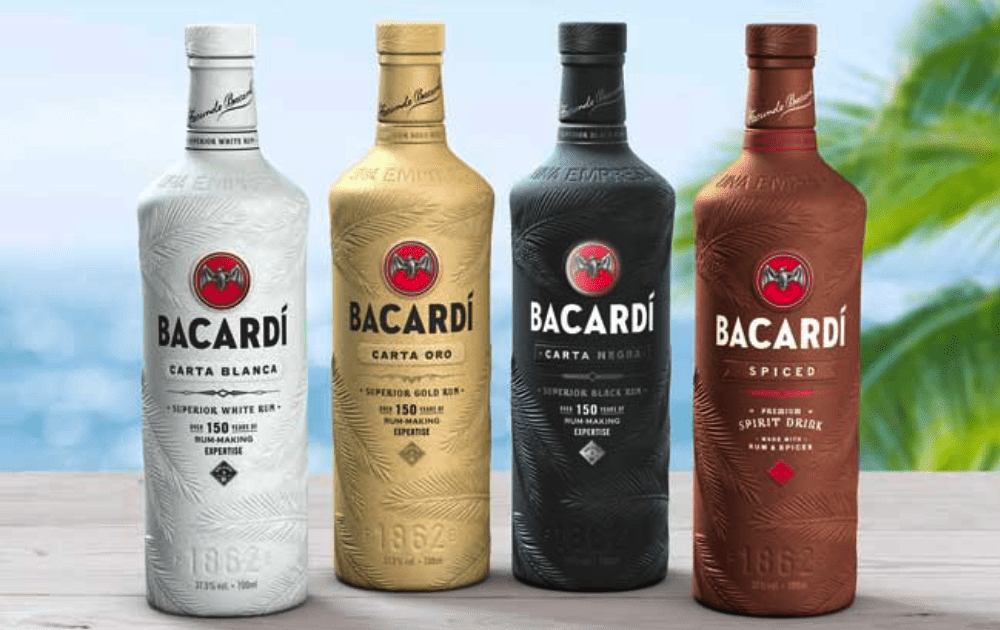
The idea behind Barcadi’s sustainable marketing campaign:
Up until recently, we’ve known Bacardi as a rum producer. But now people are asking whether Barcadi might be the company that has solved the world’s plastic problem?
Additionally, Bacardi has invented a biodegradable bottle that degrades in only 18 months while other plastics still take hundreds of years to degrade. Talking about sustainability marketing definition 101!
Why does it work?
Technically, this isn’t a sustainable marketing campaign but an entirely new product. But there’s a reason why Bacardi is rounding off our list.
Bacardi who didn’t start as a company that cared a whole lot about sustainability is now one of its pioneers. Nevertheless, we’re convinced you can do it, too!
Key takeaway
Thus, sustainable marketing becomes the easiest thing in the world if your company has sustainable products or practices.
5 steps to successful sustainable marketing
We’ve summarised all 10 examples in five easy steps that you need to take to launch (successful) sustainable marketing strategy or campaign of your own:
1. Be authentic
Firstly, authenticity is a key factor in any marketing campaign. And especially so if you want to stand out and set an example for sustainability practices. For example, here are some dos and don’ts you should pay attention to in your next campaign:
- DOs: Make sure that your sustainable marketing reflects how you see yourself as a company but also how your consumers see you.
- DON’Ts: Avoid putting out sustainable marketing campaigns that stand in no clear context with your company.

2. Focus on your product or service:
Customers stay loyal to a brand because of its products and services. Moreover, providing good quality products by following the sustainable marketing concept is a sure way to securing your customers’ loyalty!
- DOs: Your product/service or processes should be the first thing you make more sustainable. Part of it is also to understand what your competitors are doing.
- DON’Ts: Don’t just release beautifully-worded campaigns. Before you know it you’re branded as a company that supports greenwashing.

3. Simplify your messaging
Overcomplicating your campaign messaging can overwhelm your consumers. Instead, always focus on staying to the point and being clear in what you want your customers to know.
- DOs: Sustainable marketing should be fact-based. But it’s crucial that you make these facts easy to digest. So, tell a story, use AI marketing tools or gamification. The sky’s the limit.
- DON’Ts: Avoid telling misleading facts that leave room for interpretation. As your consumers will call you out on it.

4. See the big picture:
Most importantly, one of the characteristics of sustainability marketing is seeing the bigger picture. Additionally, finding solutions for present and future generations. Therefore, always try to find a bigger perspective!
- DOs: Let consumers know what societal or environmental cause you’re serving and why you’re serving it.
- DON’Ts: Steer clear of marketing messages that make your company the centre of attention. It distracts from the cause.

5. Consider being transparent:
Being transparent is often a fruitful marketing strategy as some of the examples above have shown. Don’t be shy and clandestine, but open up to your consumers and show them what your brand really stands for.
- DOs: Be as transparent with your production processes or sustainable initiatives as possible. But, of course, you should be comfortable with it.
- DON’Ts: Don’t pretend that you’re super sustainable if you aren’t. As it’s better to reveal that some of your practices aren’t yet sustainable but that you’re working on them.

Two sustainable marketing challenges
Sustainable marketing isn’t always a piece of cake. As it requires that you maybe not necessarily change your product/service, but definitely adapt some of your values.
Two things are particularly tricky. So let’s look into them to make sure you don’t fall in either trap.
Sustainable Marketing vs Greenwashing
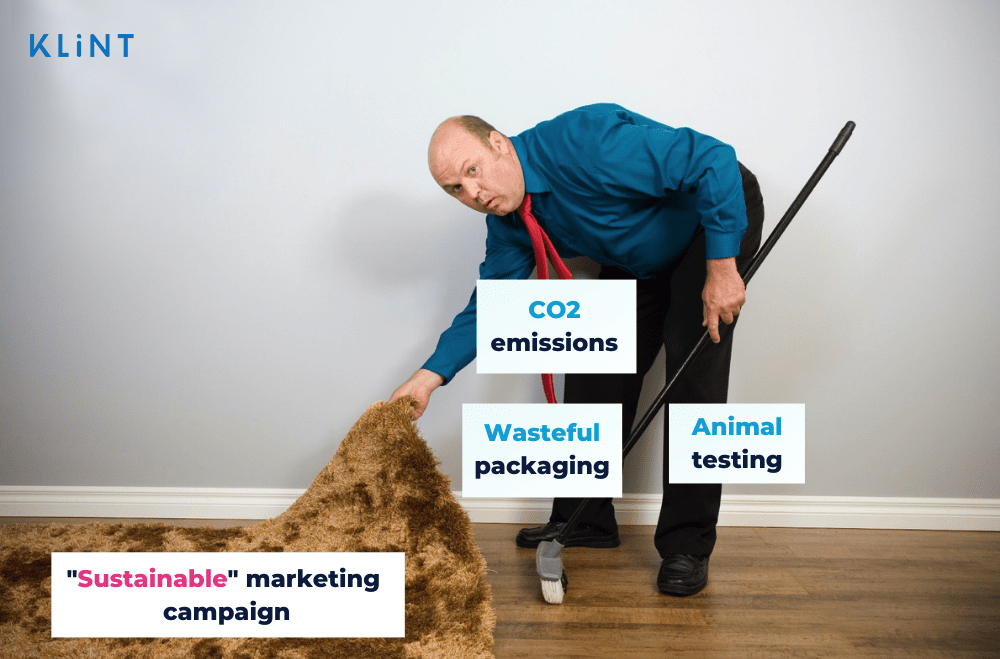
What does it mean?
In order to remind ourselves: the concept of sustainable marketing includes three practices – environmental, economic, social.
Greenwashing is a practice that’s linked to only the environment. Therefore, we want to give it special attention here. Moreover, it has become the buzzword that consumers have come to associate with sustainable marketing.
Hence, according to Shopify, greenwashing is done by marketers that try to capitalize on the growing number of green consumers.
As a result, in promoting products that aren’t technically green, they contribute to the heightened scepticism among consumers.
Examples of Greenwashing:
- Mc Donald’s paper straws: There are two main problems with the initiative. Firstly, the straws aren’t recyclable in some countries. Secondly, the cups are still single-use plastic.
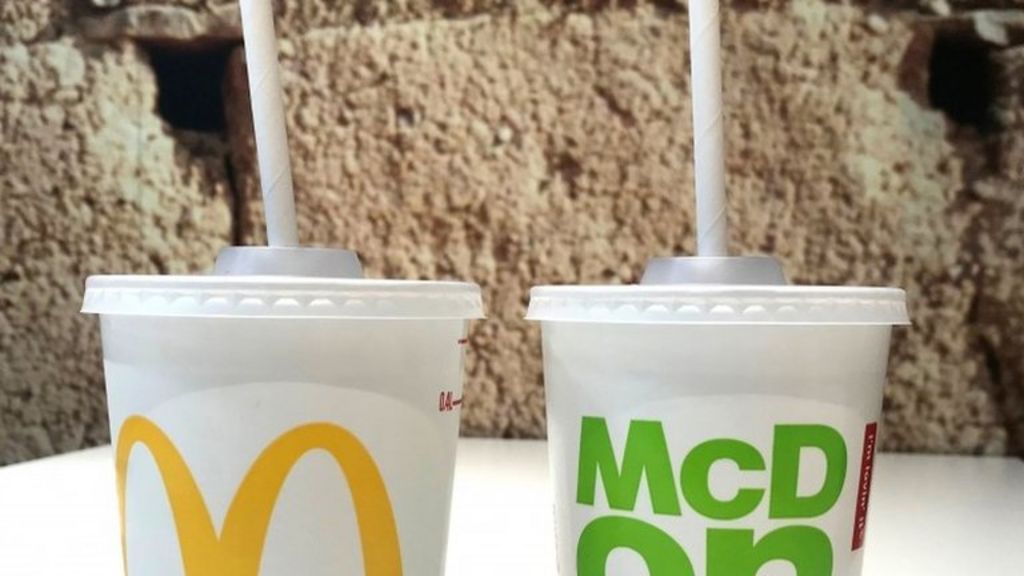
- L’Oreal “vegan-friendly” hair care: Insufficient laws allow L’Oreal to label their products as vegan friendly even though they have been tested on animals.

- Ryanair’s fake green ad: Ryanair claims to be “Europe’s…lowest emissions airline”. In reality, Ryanair has been put on the list of Europe’s top ten emitters.
What to do about it?
For consumers, it is getting harder and harder to determine who greenwashes and doesn’t. So, be transparent in your efforts and make sure your products/services or processes are actually sustainable.
Sustainable Marketing vs Convenience
What does it mean?
New research by Getty Images has unveiled some alarming facts about the average consumer’s sustainability practices. And they again mainly focus on the environment.
These are their main findings:
- 81% consider themselves to be eco-friendly
- BUT: Only 50% buy products from brands that are actually eco-friendly
- 92% believe how we treat our planet now has a long-lasting impact
- BUT: 48% say that convenience still has priority over sustainability
- 84% claim that being environmentally-friendly is important to them
- BUT: 68% cannot recall a single sustainable brand
What to do about it?
The goal is to offer products/services that are both convenient and sustainable. And that’s not the easiest thing to pull off. So, take it step by step and keep your customers in the loop.
Key takeaways for every (sustainable) marketeer
Let’s sum up everything you need to know to rock your sustainable marketing:
- Sustainable marketing definition: The marketing of your companies’ environmental, social, and economic practices.
- Sustainable marketing should be customer-centred instead of product-centred.
- The five steps to successful sustainable marketing: 1. Be authentic, 2. Focus on your product or service, 3. Simplify your messaging, 4. See the big picture, 5. Consider being transparent
- Whatever you do, don’t greenwash.
- Consumers want products to be both convenient and sustainable.
But the most important takeaway by far is this one:

In summary, sustainable marketing is how you will be able to create value for your consumers, now and in the future.
So, use all our tips to start making sustainable change, today!
Not ready to take on sustainable marketing by yourself?
We at Klint Marketing are here to help.
No matter if you’re looking for creative content, or are struggling to convert your sustainable marketing into sales, make sure to reach out to us.
Also, if you want to learn more about sustainable marketing, leave us a comment.
Why does it work?


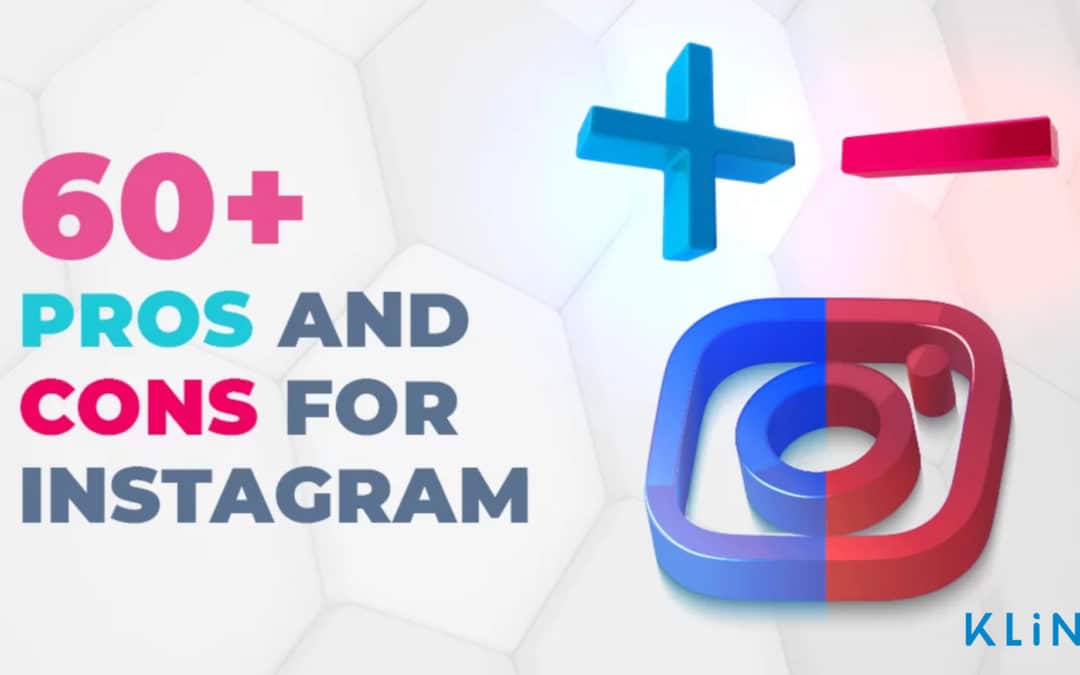


Sustainability will continue to be a central part of all advertising and marketing in the future. Thanks for the fresh perspective